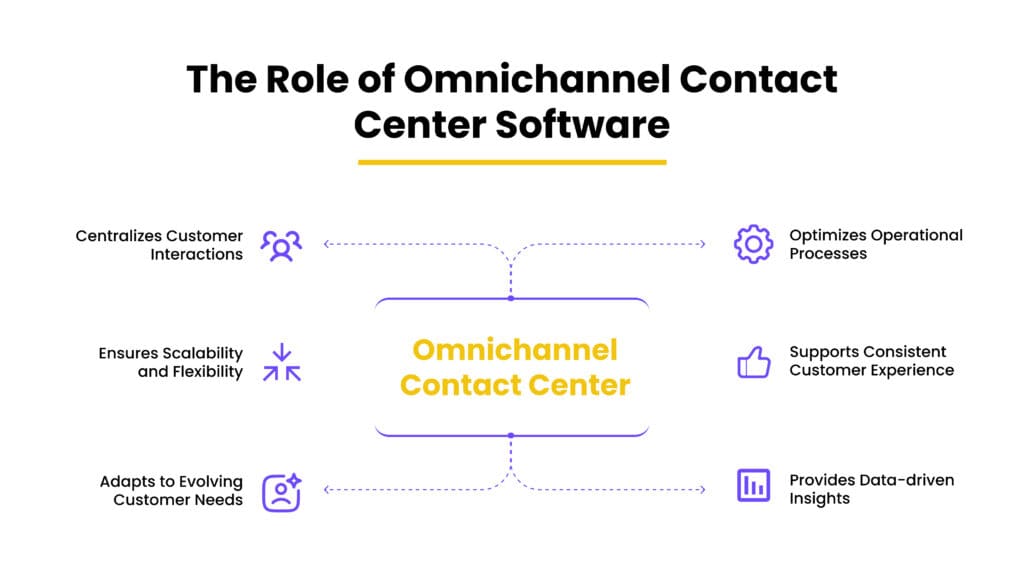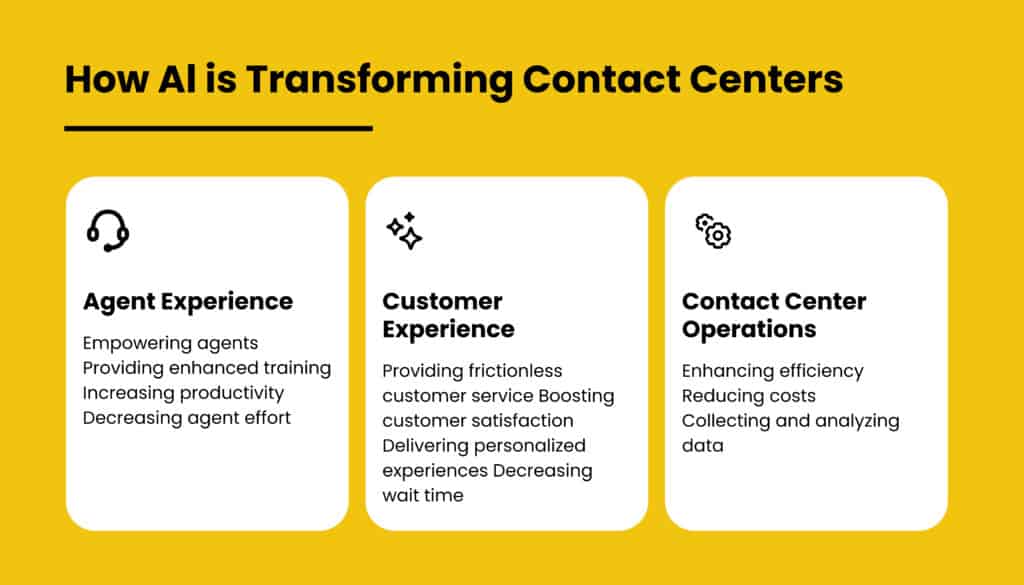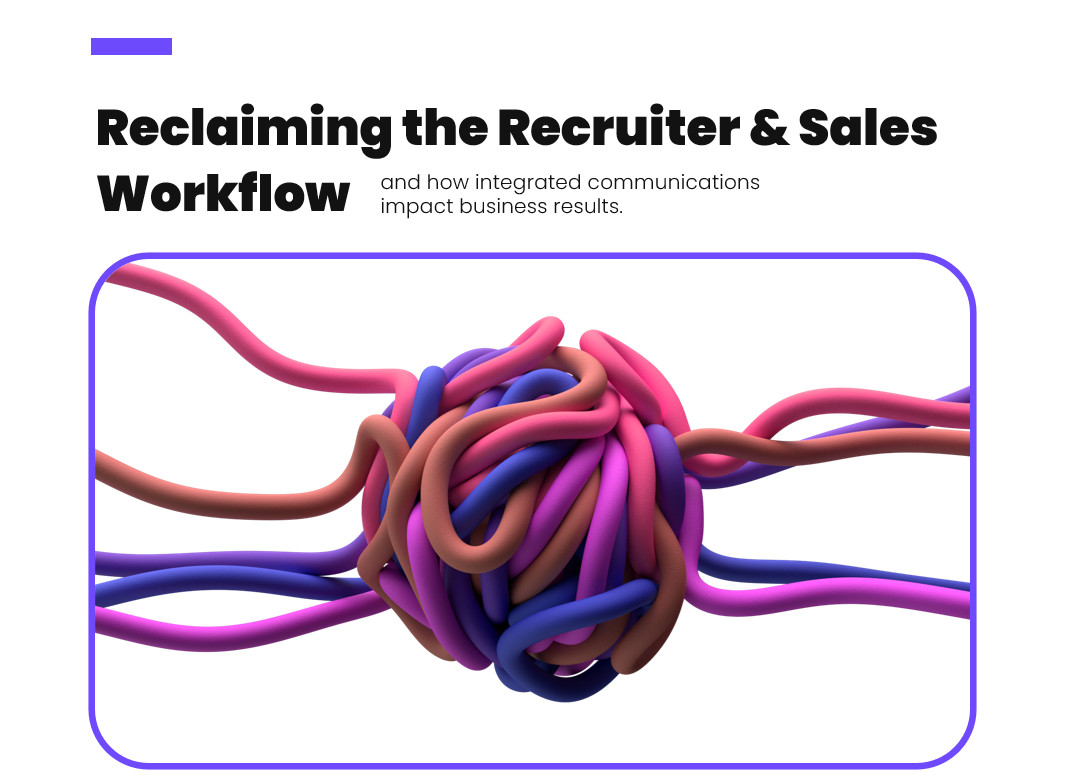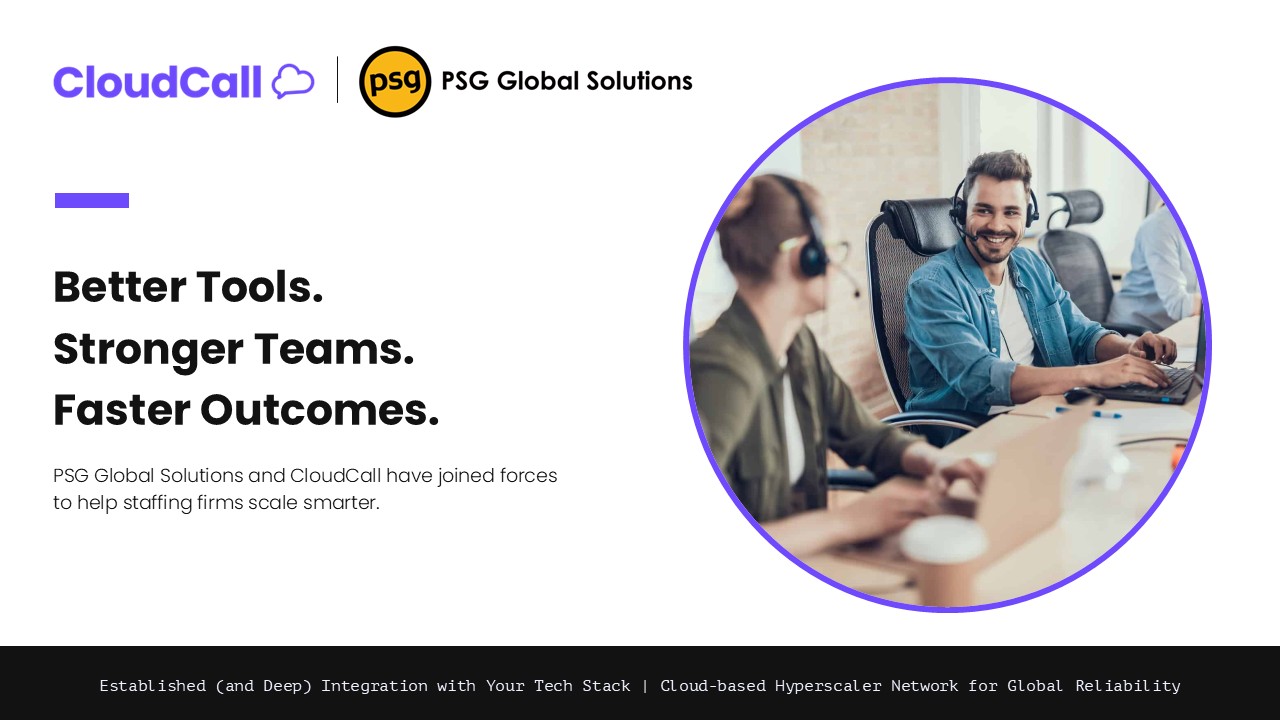In a world where customers expect instant, seamless communication, businesses are rethinking how they connect with their customers. Enter omnichannel contact center software — the ultimate tool for companies looking to boost customer satisfaction, smooth out operations, and see real returns on investment (ROI). Whether it’s phone calls, emails, chats, or social media, omnichannel solutions let your team meet customers wherever they are while keeping everything in sync. Let’s dive into how this technology can transform your contact center into a revenue-driving machine.
Why Omnichannel Contact Centers Are Key to ROI Growth

Traditional contact centers often leave businesses with disconnected systems, clunky processes, and frustrated customers. When channels like email, chat, and phone don’t communicate, interactions can slip through the cracks, leading to inconsistent experiences. Customers hate repeating themselves and let’s face it, your agents aren’t thrilled either.
Omnichannel contact center solutions solve this by bringing all customer interactions into one place. Whether it’s a phone call or a web chat, your team gets a full view of the customer journey. This holistic approach doesn’t just make things easier for agents and customers; it helps businesses:
- Cut inefficiencies with streamlined processes.
- Deliver a consistent brand experience.
- Make data-driven decisions to improve operations.
When every channel works together, businesses can better manage resources, deliver more personalized service, and see tangible results on their bottom line.
Strategies to Maximize ROI with Omnichannel Contact Center Software
Now that we’ve covered why omnichannel contact centers are essential for boosting ROI, let’s dive into some practical strategies. These tips will help you make the most of your contact center software while keeping both your customers and agents happy.
Streamlining Customer Journeys
One great way to boost your ROI is by improving the customer journey. Let’s look at how bringing all interactions together and creating smooth transitions across channels can make a big impact:
Imagine a customer starts a chat on your website and then calls your support line to follow up. Without an omnichannel contact center, they might have to re-explain their issue. With an omnichannel platform, every interaction—regardless of the channel—is tracked and accessible in one place. This means:
- Seamless transitions: Agents can pick up where the last one left off, no matter the channel.
- Real-time updates: Customers feel seen and understood.
- Personalized experiences: With a full view of their journey, you can offer solutions tailored to their needs.
By centralizing communications, you’re not just saving your team’s time; you’re earning customer loyalty that translates into long-term revenue.
Now that the customer journey is streamlined, it’s time to discuss how analytics can further enhance your ROI.
Leveraging Data Analytics
Omnichannel software provides businesses with an incredible advantage through data analytics. Here’s how it works and why it matters.
Data is your secret weapon. Omnichannel software collects insights from every interaction, giving you valuable information to work with. Here’s how you can use it:
- Track behavior: Understand what your customers need, what they like, and where they’re struggling.
- Improve performance: Use metrics like resolution times and first-contact resolutions to coach agents.
- Save money: Identify bottlenecks and optimize resource allocation.
When you have the right data, making smarter, faster business decisions becomes second nature.
Enhancing Agent Productivity
Now, it’s time to focus on your agents. After all, happy agents make happy customers. An omnichannel contact center empowers your team with the tools they need to thrive, including:
- Unified dashboards: No more jumping between systems. Agents get everything they need on one screen.
- AI-powered tools: From suggested replies to customer sentiment analysis, AI makes agents’ jobs simpler and faster.
- Automation: Bots handle repetitive tasks like ticket categorization or follow-ups so your team can focus on meaningful interactions.
When agents have the right support, they’re more engaged, more efficient, and—you guessed it—more profitable for your business.
Integrating AI and Automation
Automation isn’t just a trendy term—it’s a vital tool for modern contact centers. Chatbots, virtual assistants, and AI-driven analytics can reduce your team’s workload and keep operations running smoothly. Here’s how it works:
- 24/7 support: Chatbots can answer FAQs or escalate complex queries when agents are unavailable.
- Predictive analytics: Spot trends and anticipate customer needs before they become issues.
- Workflow automation: Speed up processes like follow-ups and ticket closures.

Tools and Technologies for Omnichannel Success
Now that we’ve covered the strategies, let’s take a closer look at the tools and technologies that drive omnichannel success.
Customer Relationship Management (CRM) Integration
A solid CRM is at the heart of any successful omnichannel strategy. Here’s why integrating it is a must and how it can transform your customer service experience.
To deliver truly personalized service, your omnichannel contact center software must integrate with your CRM. Why? Because CRMs provide:
- Customer history: Know who you’re talking to and what they’ve experienced.
- Automation features: Send follow-ups, reminders, or personalized offers.
- Call routing: Ensure customer queries are directed to the right agents quickly and efficiently.
- Click-to-call functionality: Enable agents to make outbound calls directly from the CRM with a single click, saving time and improving response rates.
- Seamless workflows: Keep everyone—from sales to support—on the same page.
Key features to look for in a CRM include:
- Unified contact records.
- Built-in analytics.
- Easy integration with your contact center platform.
A powerful CRM ensures that every customer interaction is personalized and meaningful, creating a foundation for exceptional customer experiences.
Cloud-Based Solutions
Next, let’s talk about cloud-based solutions. Unlike on-premises systems, they offer:
- Scalability: Add users and features as your business grows.
- Flexibility: Support remote work and global teams.
- Real-time collaboration: Agents can access customer data from anywhere.
Additionally, cloud-based systems reduce the need for heavy infrastructure investments, making them cost-effective for businesses of all sizes. With data securely stored and accessible globally, businesses can ensure smooth operations regardless of location.
AI-Powered Insights

AI tools are no longer seen as a luxury, but a must-have for businesses aiming to maximize ROI. These tools provide actionable insights that:
- Highlight performance gaps.
- Predict customer behavior.
- Suggest improvements to workflows.
Imagine being able to foresee potential churn or identify high-value customers before they reach out. AI-powered insights improve customer retention and also optimize marketing and service strategies. These tools empower decision-makers to act proactively, staying ahead in a competitive market.
Best Practices for Implementing Omnichannel Contact Center Software
Rolling out an omnichannel contact center doesn’t have to be overwhelming. With the right approach, you can set your team up for success. Here are some best practices to keep in mind:
- Start small and scale gradually: Don’t rush to integrate every channel at once. Begin with one or two high-impact channels and master them before expanding. This reduces the risk of operational disruptions and allows your team to adjust comfortably.
- Train your team: Comprehensive training is a must. Equip your agents with the knowledge and skills they need to confidently navigate the new system. Hands-on workshops and interactive sessions can make the learning curve less steep.
- Monitor and optimize performance: Use analytics tools to keep track of how the new system is performing. Look at metrics like resolution times, customer satisfaction, and cost per interaction. Regularly refine your approach based on these insights.
- Engage stakeholders early on: Ensure that everyone, from leadership to frontline staff, understands the benefits of the omnichannel platform. When all stakeholders are on board, the transition becomes smoother and more successful.
- Leverage feedback loops: Encourage agents and customers to provide feedback on their experiences with the new system. Use this feedback to make necessary adjustments and demonstrate your commitment to improvement.
- Pilot test new features: Before rolling out new functionalities across the board, conduct pilot tests with small teams. This allows you to identify potential issues and address them without affecting the entire operation.

Monitoring and Measuring ROI for Omnichannel Systems
Monitoring and measuring ROI is critical to truly maximizing the value of your omnichannel contact center. Leveraging contact center analytics ensures you gain actionable insights to refine strategies and improve outcomes consistently. This ensures you’re meeting expectations as well as improving and delivering long-term value.
Key Metrics to Track
- Customer Satisfaction Scores (CSAT): Measure how happy your customers are after interacting with your team. High CSAT scores indicate a strong alignment between service delivery and customer expectations.
- Net Promoter Score (NPS): Understand how likely customers are to recommend your business. A high NPS reflects loyalty and satisfaction.
- Average Resolution Time: Evaluate how efficiently issues are being resolved. Faster resolutions lead to happier customers and lower operational costs.
- Cost Per Interaction: Monitor the cost of managing each customer interaction. Lowering this cost without sacrificing quality is an important goal.
- First Contact Resolution (FCR): Track how often issues are resolved during the first interaction. Higher FCR rates improve efficiency and customer satisfaction.
Tools for Tracking and Optimization
- Analytics Dashboards: Provide a real-time view of performance metrics.
- AI-Driven Insights: Identify patterns and predict future trends.
- Customer Feedback Tools: Collect feedback directly from customers to identify improvement areas.
By consistently tracking these metrics, you can refine your processes, effectively allocate resources, and ensure your omnichannel contact center delivers on its promise.
To sum up, omnichannel contact center software is a transformative strategy for businesses aiming to build stronger customer relationships and maximize ROI. By unifying communication channels, leveraging data-driven insights, and empowering agents with the right tools, businesses can deliver experiences that exceed customer expectations.
Whether you’re just starting out or looking to optimize an existing system, the strategies, tools, and best practices discussed here can help you make the most of your investment.
FAQs
Omnichannel contact centers streamline customer interactions, improve agent productivity, and deliver personalized, consistent service.
Unifying communication channels ensures customers don’t have to repeat themselves, leading to smoother and more enjoyable experiences.
CRM integration, cloud-based platforms, and AI-powered insights are all key to achieving good ROI.
Absolutely! Small businesses can use these tools to level up their customer service, optimize resources, and compete with larger players.




